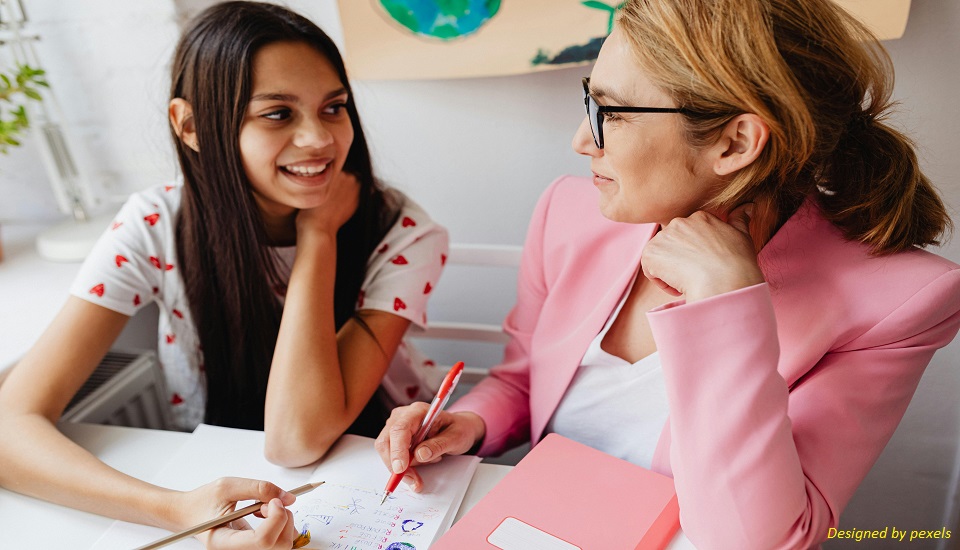8 Counseling Approaches Every Teacher Should Use To Support Struggling Students
21st April 2025
You became a teacher to make a difference, but some days, the emotional needs in your classroom can make you feel helpless.
Think about your most challenging student right now. The one whose behavior seems impossible to understand - the sudden tears over a minor setback, the refusal to participate in group work, the student who zones out completely. The question is: how can you actually support them? Counseling skills for teachers are what you need to develop.
According to UNICEF, about one in seven students globally suffers from mental health issues! Many of these students are sitting in classrooms, just like yours, struggling with behavior problems. What if you can respond with confidence instead of helplessness when a student is struggling?
Why Teachers Need Counseling Skills
The main idea is to help your sensitive students handle their feelings, behaviors, and thoughts. No, you don't have to become a mental health specialist. But learning a few simple skills can make a big difference in your students' lives.
When you use basic counseling approaches, you understand how to respond with kindness and clear purpose. You stop seeing students 'difficult to deal with' when they are struggling. You notice better behavior. Your students grow stronger emotionally. You do not feel as tired and stressed at the end of the day. Best of all, you build a classroom where training for school students feel rewarding.
What Are the Different Approaches to Emotionally Support Students?
Let's have a look at these counseling approaches that you can use right away. They offer you a new lens- one that helps you see beyond behaviors to the emotions driving them, and respond in ways that actually help.
- Cognitive Behavioral Therapy (CBT)
With CBT, you can help students see how their thoughts affect their feelings and actions. It is great for students who worry about tests, do not believe in themselves, or think too much about problems.
You can try simple CBT techniques like asking 'What were you thinking right before you got upset?' Use charts to find patterns in behavior. Allow students to change negative thoughts like 'I'm stupid' to 'This is hard, but I can learn it.' Note that you are not trying to diagnose problems but enabling students to notice their thoughts.
- Solution-Focused Brief Therapy (SFBT)
Instead of talking a lot about problems, the SFBT approach lets you look at goals and solutions. It is quick and works well for short chats during breaks or advisory periods.
Try asking questions like 'On a scale from 1 to 10, how are things today?' or 'If things got better overnight, what would tomorrow look like?' With these questions, you support students get a picture of a better situation, even in small ways.
- Narrative Therapy
This approach lets students tell their stories in ways that separate them from their problems. They are not 'a bad kid.' They are the kids who sometimes make mistakes.
You can ask them, 'What would you name the challenge you are facing?' Storytelling is a brilliant way to help students think about problems differently and take ownership of their experiences.

Source: structural-learning.com
- Person-Centered Therapy
This one is all about really listening to students. Not judging. Not rushing to fix things. Just truly hearing them. It sends a powerful message: You matter. You are safe here.
This attitude means so much to students carrying invisible burdens. When you show genuine interest and empathy, you create a mental health-friendly space where students feel valued for who they are, not just how they perform academically.
- Gestalt Therapy
Gestalt focuses on the here and now. What is the student feeling right this minute? It uses creative activities like drawing, acting things out, or checking in with body language.
It is great for art projects or social-emotional learning. You are helping students feel their emotions instead of hiding from them. This approach teaches students that all feelings are valid and helps them learn to express themselves in healthy ways.
- Mindfulness-Based Therapy
The mindfulness approach is the one that brings attention back to breathing and body sensations, especially during stressful times like tests or changing classes.
You can practice 3-minute breathing exercises, body scans where you ask 'What do you notice in your body right now?', or focus games before tests or after recess. These calm the brain, improve focus, and help kids control strong feelings. And yes, even a minute of mindfulness can help reset a student's emotional state.
- Psychodynamic Therapy
This one particularly digs into past experiences and patterns. It is best left to trained counselors.
However, as a teacher, you can use some ideas like asking 'When did you first start feeling this way?' or 'Does this remind you of something similar that has happened before?' These questions gently help students understand themselves better without probing too deeply into areas that should be addressed by mental health professionals.
- Existential Therapy
Sometimes or most of the time, students, especially teenagers wonder about who they are and what life means. Existential therapy explores these big questions.
To address this, you can ask, 'What is most important to you right now?' or 'What type of person do you aspire to be?' These questions create space for sensitive conversations as students figure out who they are. In a way, you help students connect their learning to their developing sense of identity and purpose.
Bottom Line
Did you notice that these approaches confirm one thing- communication is the key? Educators who completed the child counseling courses online claim the same. These methods help you respond thoughtfully instead of reacting. And they show students that school is not just a place to learn facts but also a place where they can feel understood and safe.
Written By : Varsha